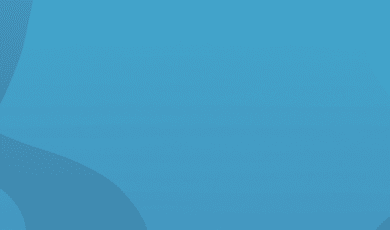Who Really Owns Your Health Data — and What Are They Doing With It?
In the modern era of digital health, the question of data ownership and privacy has never been more critical. As healthcare communication shifts toward interconnected, technology-driven solutions, understanding how your personal health information is used is essential.
Introduction: The Digital Surge in Healthcare
Over the past decade, healthcare has experienced a dramatic digital transformation. From electronic health records (EHRs) to telemedicine platforms and AI-driven diagnostics, patient data is being generated and stored at unprecedented rates. This digital shift is enabling improved patient-provider communication, enhanced diagnosis accuracy, and access to broader healthcare resources. But as innovation flourishes, a pivotal question arises: Who owns your health data, and what is actually happening to it behind the scenes?
The answer isn’t as straightforward as it might seem. Data ownership, transparency, and consent are areas shrouded in legal, ethical, and technical complexities. With the healthcare sector increasingly reliant on robust communication—including translation services, speech data, and collaboration with localization professionals—understanding these complexities is more crucial than ever.
The Life Cycle of Health Data: From Collection to Communication
Every time you interact with the healthcare system—be it a clinic visit, a video consultation, or even syncing your wearable device—your health data is collected, stored, and, in many cases, shared. Let’s break down the key players and process:
- Healthcare Providers: Hospitals, clinics, and practitioners collect health information to diagnose, treat, and monitor patients. This information can include clinical notes, diagnostic images, lab results, and demographic details.
- Digital Health Platforms: Telehealth apps, patient portals, and mobile health wearables generate and store vast quantities of user-generated data, sometimes employing cloud-based third-party services.
- Pharmaceutical and Research Institutions: Clinical trial data, population health studies, and genetics research all rely on aggregated patient data, often de-identified to protect privacy but valuable for medical advancements.
- Localization and Communication Services: As platforms aim for global reach—translating and localizing healthcare information and services—health data may be shared with language professionals or processed by speech recognition technologies.
In every stage, your health data changes hands, and each exchange introduces potential questions about ownership, use, and consent.
The Legal and Ethical Landscape: Who Legally Owns Your Data?
The idea of “ownership” over health data is complex and varies dramatically across jurisdictions:
- United States: Under HIPAA (Health Insurance Portability and Accountability Act), healthcare providers and insurers are often considered custodians or ‘owners’ of patient data, but patients have rights to access and, in some cases, control its usage.
- Europe: The General Data Protection Regulation (GDPR) positions individuals as the primary owners of their personal data, with strict consent and transparency requirements for any usage, including processing and transfer across borders.
- Other Regions: Many countries follow similar frameworks but differ in enforcement, data portability provisions, and recourse for patients.
However, regardless of region, most healthcare organizations act as “data stewards” rather than outright “owners.” They are tasked with securing and managing patient data but are also subject to data-sharing agreements, partnerships, and legal obligations that can sometimes dilute patient control.
What Happens To Your Data? Usage, Sharing, and Risks
With so many stakeholders involved, health data can serve a wide array of legitimate and ethically grey purposes:
- Direct Care and Treatment: The core, intended use—improving your healthcare outcomes by ensuring accurate, up-to-date medical information follows you between providers.
- Research and Innovation: De-identified data is vital for developing new treatments, tracking disease trends, and advancing public health efforts. However, true anonymization is often more challenging than it appears.
- Communication Enhancement: Translation services, speech data collection, and recruitment of localization professionals are increasingly important in ensuring healthcare accessibility. Voice notes, transcripts, and translated health records may be used to improve communication between providers and diverse patients. But data used for these services—especially voice or speech data—can raise further privacy concerns.
- Commercial Exploitation: Some platforms and third-party vendors may leverage health data for targeted advertising or sell datasets (albeit often de-identified) to marketers or insurance firms, with patient consent often buried in lengthy terms of service.
- Cybersecurity Threats: Every handoff or new touchpoint introduces the risk of data breaches, putting patients at risk of exposure or identity theft.
The complexity of healthcare communication—especially across linguistic and cultural boundaries—magnifies these risks. The use of translation tools and speech recognition technologies necessitates sharing patient details, which can leave data vulnerable to misuse if not properly managed.
The Emerging Role of Speech and Localization Data
As healthcare providers seek to deliver services to diverse populations, speech data and localization are becoming instrumental. Collecting and analyzing speech data ensures that voice-driven digital health platforms understand patients regardless of accent or dialect. Meanwhile, localization professionals help translate medical documents, instructions, and communication, ensuring clarity and safety.
However, these innovations introduce unique data ownership challenges:
- Speech Data Collection: When patient conversations are recorded or analyzed for language services, who controls this audio data? Who decides how it can be repurposed or shared?
- Recruitment of Localization Professionals: Outsourcing translation or localization work often means granting access to sensitive information. Rigorous data protocols and ethical standards are essential but must continuously evolve to keep pace with technology.
- Interconnected Platforms: As new healthcare platforms collaborate globally, data may cross jurisdictions, facing variable privacy protections and inconsistent enforcement.
With upcoming platforms focusing on healthcare communication, translation, and speech data solutions, building trust through robust privacy frameworks, transparent consent processes, and minimizing data exposure becomes a competitive advantage—and a moral imperative.
Patient Empowerment: How To Control and Protect Your Health Data
Given the intricate web of healthcare data flows, what can patients do to regain control?
- Understand Your Rights: Familiarize yourself with regional and platform-specific privacy laws. Exercise your right to access or request deletion of your health data.
- Read the Fine Print: Always review privacy policies and consent forms—especially those associated with digital health or communication platforms.
- Ask Questions: Don’t hesitate to clarify how your data will be used, especially when involved in clinical trials, telehealth platforms, or translation services.
- Choose Trusted Platforms: Opt for healthcare providers and communication solutions that prioritize transparency, ethical data handling, and robust security.
Conclusion: Building a Future of Trust and Transparency in Health Data
The question of who truly owns your health data is multi-faceted, continually evolving in response to technological advancements and regulatory shifts. For patients, the answer lies not only in laws and policies but in day-to-day choices and proactive engagement with healthcare providers and digital platforms.
As new platforms emerge to bridge healthcare communication gaps—incorporating translation services, speech data technologies, and global collaboration—the stakes for data privacy and ethical stewardship rise alongside the potential for better patient outcomes. The solution lies in a patient-centered approach built on transparency, security, and respect for individual rights.
As our upcoming healthcare communication platform eagerly anticipates launch, our aim is not just to facilitate seamless translation and speech data solutions, but to set a new standard for responsible data stewardship. We believe in empowering patients, professionals, and partners around the world to connect—safely, ethically, and for the greater good.








